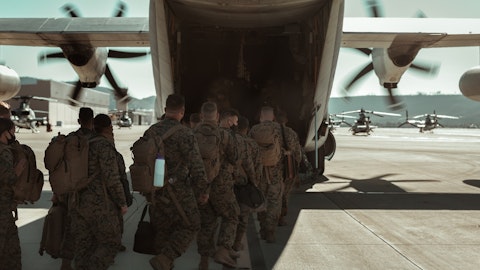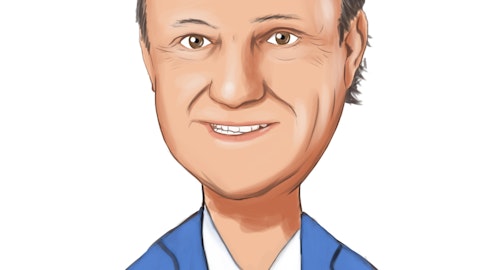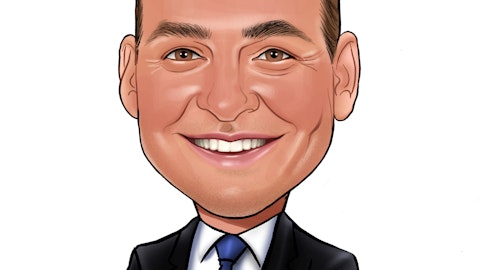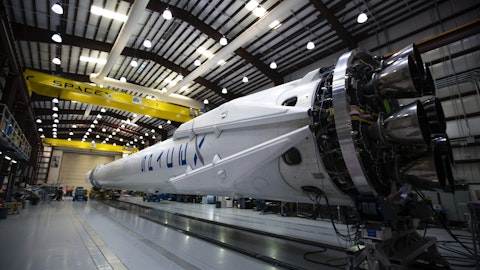Michael Ciarmoli: Right. Okay. Yeah. I mean, it’s just — yes, I just haven’t seen one of these take this long. So, I would imagine the EBITDA levels are a bit of a challenge, but — okay. And then what — I mean, Pete, you gave a pretty detailed analysis of kind of the color on the bookings. So, within the bookings, I mean, what are you seeing for near-term production rates? That underlying to 2023, I mean, supply chain obviously, maybe a little bit better, still challenges. We’ve got some other big suppliers, say the engines and supply chain is going to last all year. But what are sort of the underlying rates that’s anchoring this guidance?
Peter Gundermann: You mean for the OEM production rates?
Michael Ciarmoli: Yeah.
Peter Gundermann: Yeah. I mean, they’re pretty much as published. I mean, Boeing has us running on a 28 to 30 units a month on 737 MAX. And business jet volumes are not going down. They’re going up. Military volumes are pretty easy to predict. The take rate on a lot of our cabin electronics product lines like in-seat power and wireless access points, things like that, which are optional in the narrowbody world are pretty strong. They’re trending to like 70% or so of new aircraft production, both at Boeing and Airbus. So that definitely helps. And I hinted that the widebody resurgence is actually very beneficial for us. I mean before the pandemic, half our commercial transport sales were widebody versus narrowbody. Narrowbody has bounced back with the resumption of domestic short-haul travel.
And predictions even 10 months ago were that a lot of the widebodies that were parked in the desert would never come back, but they are. And they are because demand is coming back, too. I’m particularly encouraged by some of the recent news out of China, but as a major driver of international long-haul travel and half of the world’s largest airlines are Chinese, and they have been running at like 5% of their pre-pandemic international route structure. So, we think those trends are pretty positive. The products of ours that go into widebodies are definitely picking up. So, it’s not just production rates that drive our business. Half of our commercial transport sales pre-pandemic were aftermarket. So, we’re encouraged by 737 MAX getting back up to rate.
We’re encouraged by — hopefully 787 getting back into production, but we’re not dependent on those necessarily to see some kind of resurgence in demand. Certainly, what we’re seeing, at least in the widebody world is more aftermarket driven than line fit.
Michael Ciarmoli: Okay. Got it. And then just last one, maybe just Dave again. Free — expectations and just thinking about, I guess, it sounds like there’s obviously working capital, which a lot of companies are experiencing. Some of that should unwind. But just thinking, I guess, about the puts and takes. I mean, it sounds like that facility is going to be over 11%. I guess, if you draw on that. So, just how should we think about free cash flow or even conversion as we look into 2030?
David Burney: We will turn to cash flow positive as we move through the year.
Michael Ciarmoli: Okay.
David Burney: We saw this big buildup of inventory through the last six or nine months. We do expect the inventory build to wind down and actually decrease our inventory levels as we move through next year. That’s going to provide a little bit of a tailwind there, along with the top line growth and the margin that comes from the top line growth there. So, we are forecasting to move through the year. The first quarter will probably be — or we this quarter there next year. But as the sales grow there and we wind down the inventory. I expect the cash flow from operations to pick up significantly, especially in the second half of next year.
Michael Ciarmoli: Got it. Okay. Perfect. Thanks guys.





